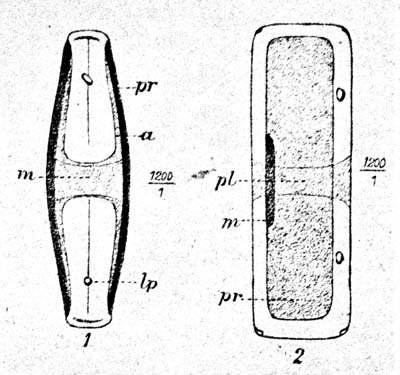Original description

Mereschkowsky
(1902), p. 186
Sellaphora,
gen.
nov.
"Valve small, symmetrical, linear to elliptical, with obtuse
ends,
terminal nodules distant; striae usually fine, connecting-zone simple.
Endochrome composed of one plate, resting with its narrow median part
on the surface of one of the valves, with four long prolongations along
the connecting zones. Pyrenoid absent. A few elaeoplasts, sometimes
represented by two libroplasts*.
"The endochrome is very uniform in all the species, the unique
chromatophore-plate being always composed of two parts—a
narrow
median part (m.
in the
figures) resting on the surface of one of the valves, which may be
called the dorsal valve; and four long, usually narrow, linear
prolongations, turned down at a right angle to the median part and
resting on both connecting-zones (pr.
in the figures). The diagram fig. 11
represents such a plate when
spread out, m.
being the median part belonging to the valve and pr. the four
prolongations resting on the connecting-zone. The diagram fig. 12
represents a transverse section of a frustule and shows the disposition
of the plate in the frustule; the upper or dorsal valve is provided
with an endochrome (m.),
the lower or ventral valve is without one."
The source article
Mereschkowsky described Sellaphora
in English, in an article (download 4.5 Mb
pdf) published in the Annals
and Magazine of Natural History [C. Mereschkowsky (1902)
"On Sellaphora,
a new genus of diatoms." Ann.
Mag. Nat. Hist., series 7, 9: 185-195 + detached plate
IV]. The following species were included:
- Sellaphora bacilliformis
- Sellaphora borscowii
- Sellaphora pupula
- Sellaphora elliptica


 This site is hosted by the Royal Botanic
Garden Edinburgh.
This site is hosted by the Royal Botanic
Garden Edinburgh.